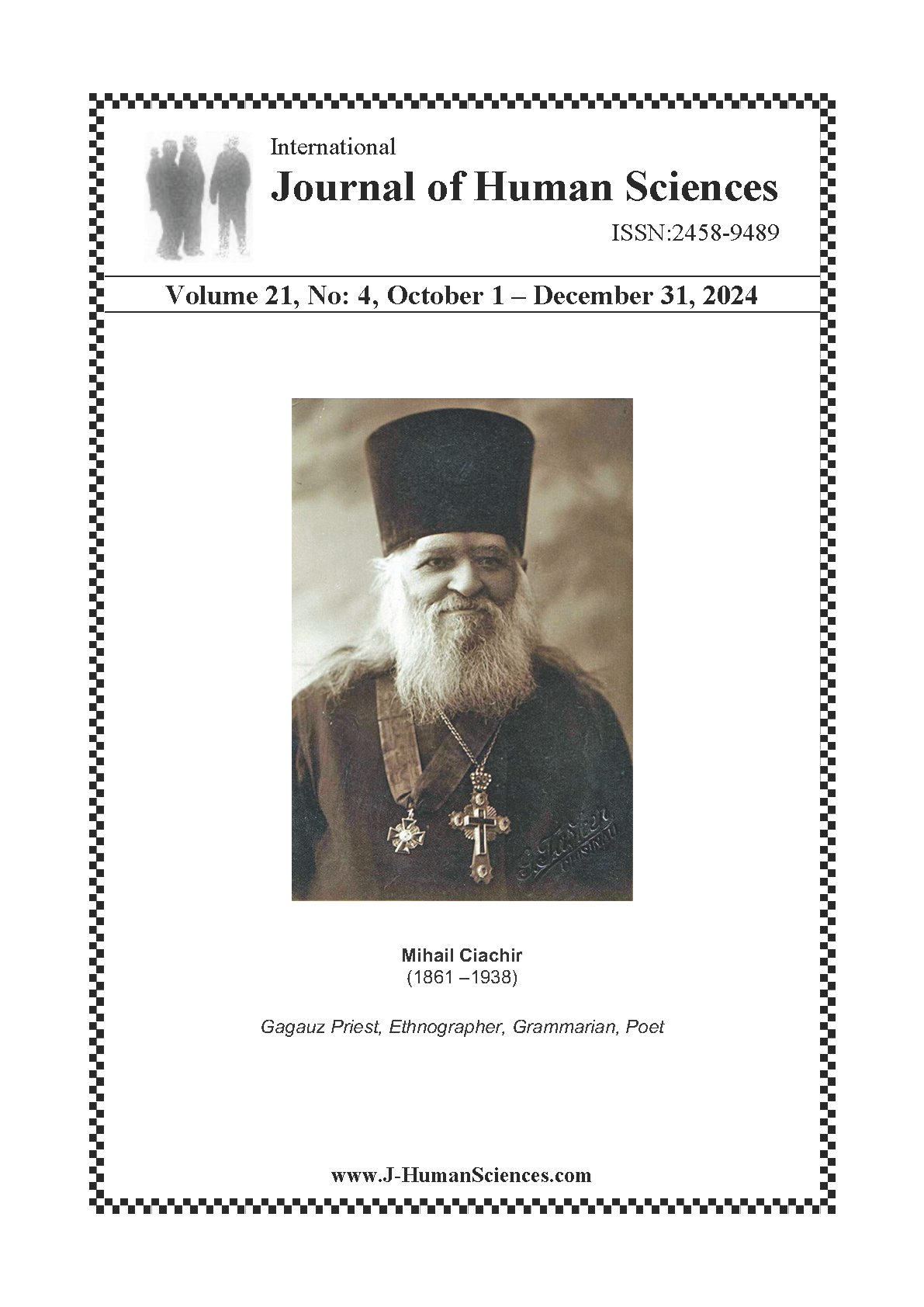An examination of the perception of future time among university students from the perspective of demographic variables
DOI:
https://doi.org/10.14687/jhs.v21i4.6496Keywords:
Future Time Perspective, Recreational Sports, University StudentsAbstract
This study aimed to examine the future time perspective of students in the faculty of sports sciences and the factors influencing this perception in relation to various variables. The population of the study consists of university students, while the sample includes a total of 266 students (128 males, 48.1%, and 138 females, 51.9%) studying at the Faculty of Sports Sciences at Kütahya Dumlupınar University. The data collection instruments include a personal information form developed by the researcher, as well as the Future Time Perspective Scale (FTPS), developed by Husman and Shell (1996) and adapted to Turkish culture with validity and reliability studies conducted by Avcı and Erden (2009). In this study, a non-experimental causal-comparative model, one of the quantitative research methods, was employed to identify the current situation. The data were analyzed using the SPSS program. Descriptive statistics such as means, standard deviations, and percentages were included in the analysis. Skewness and kurtosis values were examined, revealing a normal distribution, and Independent Samples T-Test and MANOVA were used to compare the differences. According to the findings, no statistically significant differences were found regarding students' gender, participation in recreational sports, and academic success (p>0.05). However, significant differences were found in favor of students in upper classes based on the class variable (p<0.05). These findings indicate that students become more focused on career goals as they approach graduation, which creates differences in their future time perspectives.
Downloads
Metrics
References
Aksoy, B. (2021). Beden eğitimi ve spor öğretmeni adaylarında gelecek zaman algısı ve tükenmişlik düzeylerinin incelenmesinde Bursa Uludağ üniversitesi örneği (Master's thesis, Bursa Uludag University (Turkey).
Aktaş, H. (2021). İlahiyat fakültesi öğrencilerinin gelecek zaman algısı ile akademik erteleme davranışı arasındaki ilişki: gümüşhane üniversitesi örneği. Gümüşhane Üniversitesi İlahiyat Fakültesi Dergisi, 10(20), 271-299.
Avcı, S. & Erden, M. (2009). Gelecek zaman algısı ölçeği’nin Türkçe formunun geçerlik ve güvenirlik çalışması. Çukurova Üniversitesi Eğitim Fakültesi Dergisi, 3(37), 1-12.
Dallı, M. & Pekel, A. (2017). Spor Bilimleri Fakültesinde öğrenim gören öğrencilerin gelecek zaman algı düzeyleri ile zaman yönetimi davranışlarının bazı değişkenlere göre değerlendirilmesi. Journal of Human Sciences, 14(2), 1420-1430.
Demirel, M., Işık, U., Demirel, D. H., Üstün, Ü. D., & Gümüşgül, O. (2016). Gelecek zaman algısı: Beden eğitimi ve spor yüksekokulu öğrencilerine yönelik bir çalışma. İstanbul Üniversitesi Spor Bilimleri Dergisi, 6(1), 10-20.
Gratton, C. & Jones, I. (2010). Research Methods for Sports Studies. 2nd Edition, London: Routledge.
Hazlett A. (2011). How the past depends on the future. Blackwell Publishing Ltd Ratio (new series), 24, 167-175.
Husman, J.E. & Hell, D.F. (1996). Beliefs and perceptions about the future: A conceptualization and measurement of future time perspective. The XXVI International Congress of Psychology, Montreal, Canada.
Iso-Ahola, S. E., & Weissinger, E. (1990). Perceptions of boredom in leisure: Conceptualization, reliability, and validity of the leisure boredom scale. Journal of Leisure Research, 22(1), 1-17.
Keough, K. A., Zimbardo, P. G., & Boyd, J. N. (1999). Who's smoking, drinking, and using drugs? Time perspective as a predictor of substance use. Basic and applied social psychology, 21(2), 149-164.
Nuttin, J. (2014). Future time perspective and motivation: Theory and research method. Psychology Press.
Nuttin, J., & Willy, L. (1985). Future Time Perspective and Motivation: Theory and Research Method. Belgium: Lawrence Erlbaum Associates.
Passmore, A., & French, D. (2003). Development and administration of a measure to assess adolescents' participation in leisure activities. Adolescence, 38(1), 33-44.
Schwarzer, R., & Luszczynska, A. (2008). How to overcome health-compromising behaviors: The health action process approach. European Psychologist, 13(2), 141-151.
Seginer, R. (2009). Future orientation: Developmental and ecological perspectives. Springer Science & Business Media.
Strasser, B. (2013). “Physical Activity in Obesity and Metabolic Syndrome”, Annals of the New York Academy of Sciences, 1281(1), 141-159.
Üstün, Ü. D., Gümüşgül, O., Işık, U., Demirel, M., ve Demirel, D. H., (2016). Gelecek zaman algısı: Beden eğitimi ve spor yüksekokulu öğrencilerine yönelik bir çalışma. İstanbul Üniversitesi Spor Bilimleri Dergisi, 6(1), 10-20.
Yıldız, M., Şekerci, T., ve Kırtepe, A. (2020). Spor bilimleri fakültesi öğrencilerinin gelecek zaman algı düzeylerinin incelenmesi. Gaziantep Üniversitesi Spor Bilimleri Dergisi, 5(3), 255-262.
Yılmaz, S. ve Kurtipek, S. (2022). Spor yöneticisi adaylarının gelecek zaman algılarının boş zaman yönetimine etkisi. Akdeniz Spor Bilimleri Dergisi, 6(4), 1178-1197.
Downloads
Published
How to Cite
Issue
Section
License
Copyright (c) 2024 Journal of Human Sciences

This work is licensed under a Creative Commons Attribution-NonCommercial-ShareAlike 4.0 International License.
Authors can retain copyright, while granting the journal right of first publication. Alternatively, authors can transfer copyright to the journal, which then permits authors non-commercial use of the work, including the right to place it in an open access archive. In addition, Creative Commons can be consulted for flexible copyright licenses.
©1999 Creative Commons Attribution-ShareAlike 4.0 International License.






